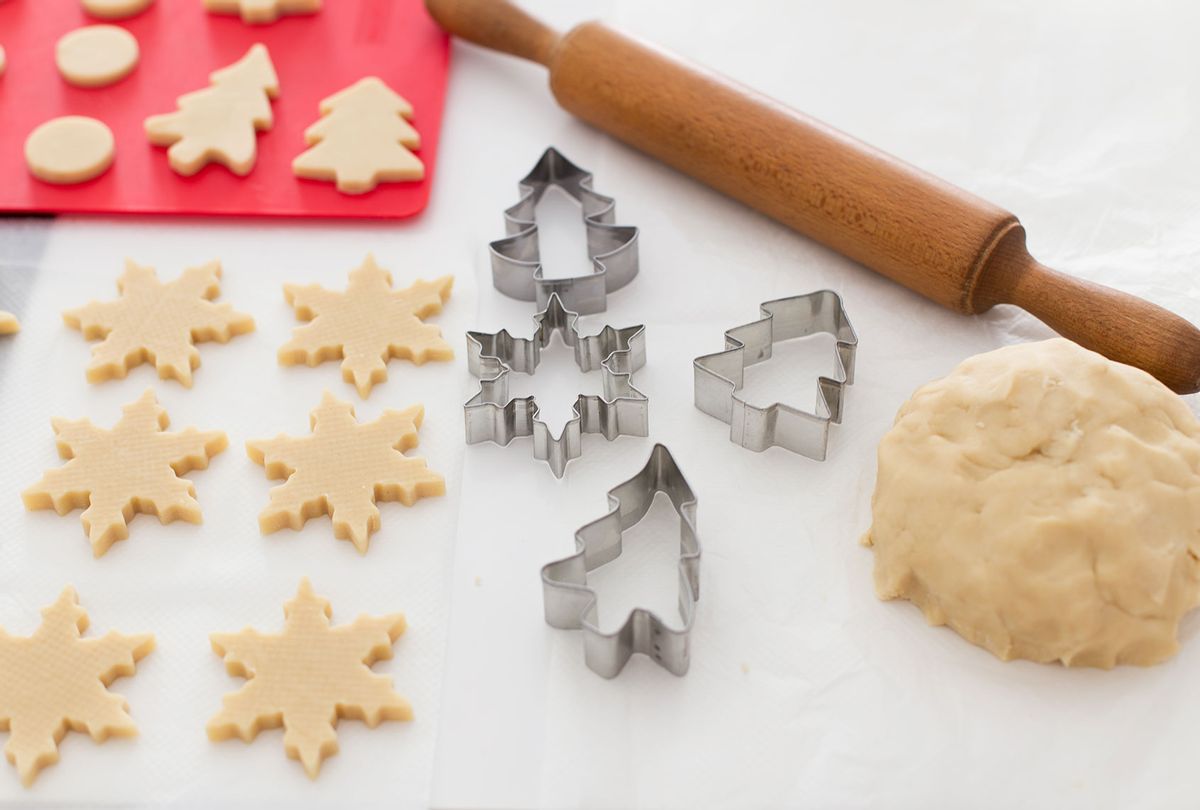It's the most wonderful time of the year . . . to work ahead and pre-make Christmas cookies so you aren't completely stressed leading up to the big day. Plus, there's something to be said for baking yourself a fresh cookie or two (perhaps served alongside a glass of alt-milk?) as a treat following all of the work that goes into pulling off the holidays.
Thankfully, plenty of seasonal favorites freeze and bake off beautifully on a later date. In order to please a crowd, you simply need to know a few basic things about choosing the right dough and add-ins, what shape or container it belongs in and how to eventually defrost it.
Without further ado, here is your ultimate guide to freezing Christmas cookies:
What types of Christmas cookie dough are the best to freeze?
The cookies that tend to freeze the best are the ones with a higher fat percentage — in the way of butter, egg yolks or oil — in the dough. It's also best if the dough, when fully mixed, is thick enough to maintain its shape when scooped. Avoid freezing dough that has a more batter-like or liquidy consistency, such as madeleines, delicate Italian florentines or some chocolate tray-bakes.
RELATED: Cookies make the best holiday gifts: Here are a top pastry chef's tips for shipping your baked goods
This is lucky for the industrious Christmas-season baker because many holiday favorites are left to choose from, including:
- Chocolate chip
- Gingerbread
- Peanut butter cookies
- Pinwheel cookies
- Shortbread
- Sugar cookies
Variations on these types of cookies tend to bake off really well, so have fun with nuts, dried fruit and extra chocolate chips. When it comes time to decorate, metallic and white sprinkles and nonpareils are fun to use.
Tip: The dye from some sprinkles may "run" after the dough is taken out of the freezer and baked off. To check if this is the case, lightly moisten a paper towel with water, lay it on a plate and place a few sprinkles on top. Allow the paper towel to freeze, then let it thaw. If the sprinkle's color runs during the thawing process, it will likely do the same if added to your dough.
How should I freeze them?
How you freeze the dough depends on what type of cookie you decide to make. For "drop cookies," like chocolate chip or peanut butter cookies, use an ice cream scoop (or a large measuring spoon) to place individual cookies on a parchment-covered sheet pan. Make sure they aren't touching. Cover the tops of the cookies with plastic wrap and allow them to freeze. At this point, you can leave the dough in the freezer as-is. (If you want to leave more room for storage, remove the dough from the sheet pan and place it in a resealable plastic bag.)
For gingerbread or sugar cookies that you plan to eventually roll out and cut with cookie cutters, form the dough into a uniform disc and wrap it tightly in plastic wrap. Finally, for shortbread or other cookies that you plan to slice, form the dough into a tightly-packed log and cover it with plastic wrap.
How long can I freeze cookie dough?
Frozen cookie dough is best used within three months. Be sure to label your batches with the dough type and the date you created it.
How do I bake them after freezing?
The majority of frozen cookie dough can be immediately baked. Just slice, if needed, and add about two minutes to the recommended baking time from the original recipe. If you plan on rolling out your cookie dough to cut or further decorate, allow it to thaw completely. The best way to do this is by letting it rest in the refrigerator overnight for about 12 hours (for larger batches, you may need up to 24 hours). From there, be sure to work on a well-floured surface to prevent sticking.
Want more great food writing and recipes? Subscribe to Salon Food's newsletter.
More inspiration from our holiday recipe box:



Shares